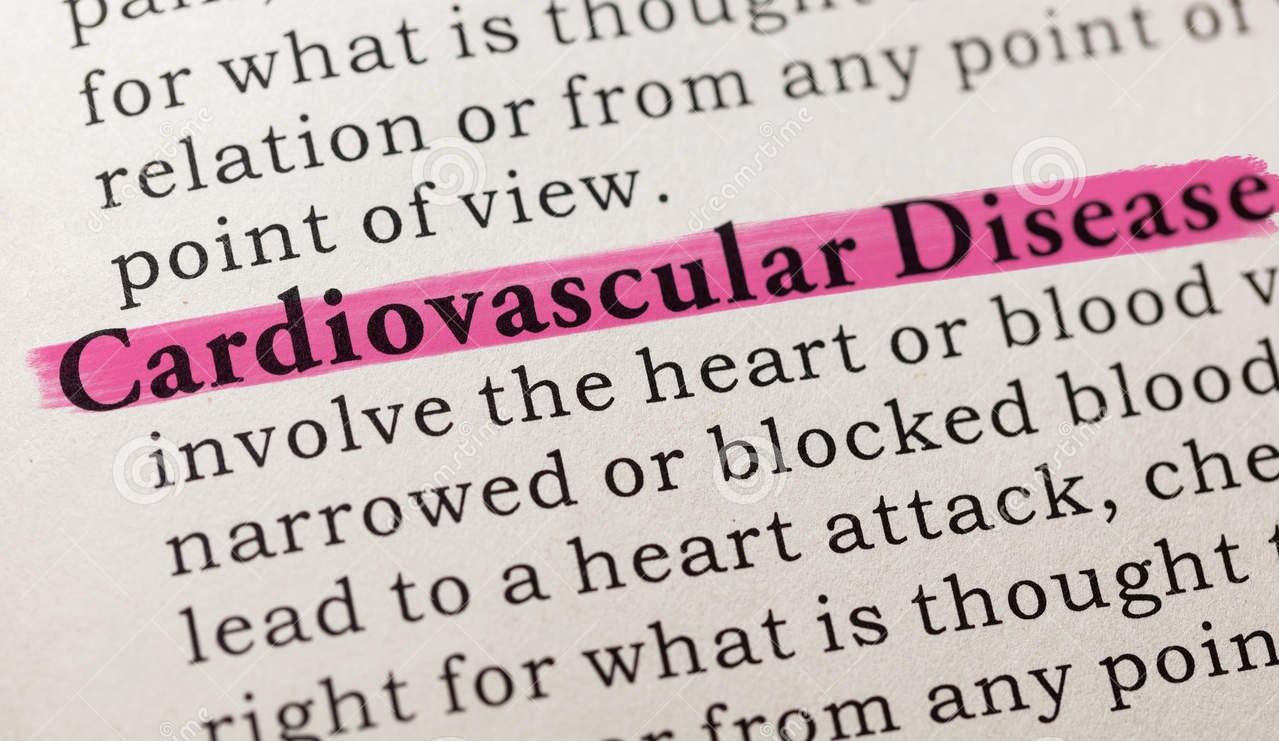Cardiovascular disease affects the heart and blood arteries. It encompasses all types of cardiovascular disease, including coronary artery disease, peripheral vascular disease, and stroke. It is among the leading causes of death in the world. It is responsible for 31% of all deaths worldwide. Cardiovascular illnesses are also the largest cause of disability, accounting for 12% of years lived with disability (YLDs). Cardiovascular disease, according to the American Heart Association, is a range of disorders that affect the heart and blood arteries. It is the greatest cause of death in the United States, taking the lives of nearly 600,000 people each year.
Causes of Cardiovascular Disease
The most prevalent cause is plaque accumulation in your arteries, which happens when cholesterol and fat molecules accumulate on the walls of your blood vessels. The etiology of cardiovascular disease can be attributed to a variety of lifestyle variables such as smoking, consuming alcohol regularly, having excessive cholesterol levels, and so on. If you have a family history of cardiovascular disease, diabetes, or high blood pressure, you are more likely to acquire this condition. Atherosclerosis (artery hardening) is the accumulation of plaque within your arteries.-Stroke — A shortage of blood flow to a portion of your brain -Heart attack — A lack of oxygen to a portion of your heart muscle.
Symptoms of Cardiovascular Disease
The most common forms of cardiovascular disease involve poor diet and physical inactivity (which can lead to obesity), high cholesterol levels (dietary fat intake), smoking, diabetes, hypertension (high blood pressure), and stressful lifestyles. It includes atherosclerosis, coronary artery disease, hypertension, heart failure, congenital heart disease, and stroke.
Cardiovascular Disease Types
There are various types of cardiovascular diseases which include:
1. Coronary artery disease
Coronary artery disease occurs when the coronary arteries constrict or get clogged, reducing blood flow to the heart. This can result in chest pain and a heart attack. Atherosclerosis, or plaque formation in the arteries, is the primary cause of coronary artery disease. When plaque accumulates inside an artery, it narrows that part and restricts blood flow across that location. Plaque narrowing can also make it more difficult for oxygen-rich blood cells to move through.
2. Peripheral artery disease
Peripheral arterial disease (PAD) is a type of vascular disease in which the arteries outside the heart and brain become narrowed due to fatty deposits. PAD can cause pain in your legs, ankles, feet, arms, or hips. The first symptom of PAD is a pain in your leg muscles during exercise. You may also feel numbness or a tingling sensation in your legs and feet. The symptoms usually go away after you rest for a while, but they can come back any time you walk on uneven surfaces or on stairs. Over time, plaque builds up in the walls of your arteries, including the veins in your legs, making them narrower and less flexible.
3. Stroke
Strokes are the third leading cause of death in the United States, and more than 150,000 people suffer a stroke each year. Strokes can have serious long-term effects on the brain if not treated quickly. Stroke is a condition in which blood flow to the brain is limited or blocked, depriving brain cells of oxygen and leading to their death. The effects vary depending on how much of the brain is damaged. Stroke is the leading cause of serious long-term disability in Australia, according to the National Stroke Foundation. It’s also the third biggest killer, after heart disease and cancer.
4. Rheumatic fever
Rheumatic fever is an acute systemic disease caused by group A beta-hemolytic streptococcal bacteria. It is a bacterial infection that affects the heart, joints, and other organ systems of the body. Rheumatic fever occurs after a person has been infected with certain types of Group A Streptococcus bacteria, most commonly during childhood or adolescence. It is caused by a bacterium called “Streptococcus pyogenes”, which manifests itself in the body as a result of a strep throat or skin infection. This condition may be cured by antibiotics, but if left untreated, it could cause permanent damage to your heart valves and joints.
5. Heart disease caused by hypertension
When people think of heart disease, they typically think of the more common form that affects those who have diabetes or high cholesterol. But there is another type of heart disease that can affect anyone – hypertensive heart disease. This is a condition in which blood pressure has been elevated for a long time and it leads to damage in the small arteries and the large blood vessels throughout your body. Hypertensive heart disease is a medical condition that describes elevated blood pressure in the arteries of the heart. The increased blood pressure damages the heart muscle, reducing its ability to pump blood and increasing the risk of developing heart failure. While high blood pressure (hypertension) is often considered a hallmark of later life, it can affect people at any age, including children.
6. Congenital heart defects
Congenital heart defects (CHDs) are a group of conditions that affect the structure or function of the heart. They are present at birth, meaning they were present before birth and usually appear in the very early stages of pregnancy. Although some babies with CHDs may be born without any signs or symptoms, most affected babies have structural problems with their hearts that can range from mild to severe, depending on the specific condition. Atrial septal defect, ventricular septal defect, patent ductus arteriosus, coarctation of the aorta, and tetralogy of Fallot are the most common types of congenital heart defects. These defects are present from birth and may cause severe health problems. For example, if the pulmonary valve is not properly formed in the tetralogy of Fallot, the blood will mix with oxygen-poor blood from the body and this can lead to cyanosis.
How to prevent cardiovascular disease
Cardiovascular disease is a common and often deadly condition, affecting more than 30 million Americans. The single most important thing you can do to prevent cardiovascular disease is to live a healthy lifestyle. If you have any heart problems or other risk factors for heart disease, your doctor may recommend some additional treatments as well. There are several ways to prevent cardiovascular disease, the most common form of heart disease. You can control your weight, eat healthy foods, and exercise regularly. Living with high blood pressure or high cholesterol also increases your risk of developing cardiovascular disease.
Cardiovascular Disease Treatment
CVD includes any disorder of heart muscle, arteries, veins, or capillaries. Treatment focuses on lowering blood pressure and cholesterol to reduce the risk of stroke and other complications such as heart attack or kidney failure. The treatment of cardiovascular disease is a rapidly growing field with several new advances being made regularly. In the United States alone, there are currently more than 37 million people living with some form of heart disease. Most of these people are unaware that they have some form of cardiovascular disease, and it’s generally because their doctor did not detect any heart problems while performing routine check-ups. Many different tests can be used to diagnose cardiovascular disease, but none are perfect or always accurate. Possible treatments for CVD include lifestyle changes, medication, and surgery. And some people who have had a stroke may be offered rehabilitation therapy.
In conclusion
It can be life-threatening and can cause permanent damage if left untreated. Thankfully, there are preventative measures you can take to help lower your risk of CVD, which include staying active, watching your weight, reducing stress levels, maintaining healthy cholesterol levels, and eating a balanced diet. If you suffer from any of the symptoms mentioned in this article, it’s important to schedule an appointment with your doctor. If you have a family history of CVD, consider scheduling a yearly checkup to be on top of your health and prevent future incidents.








